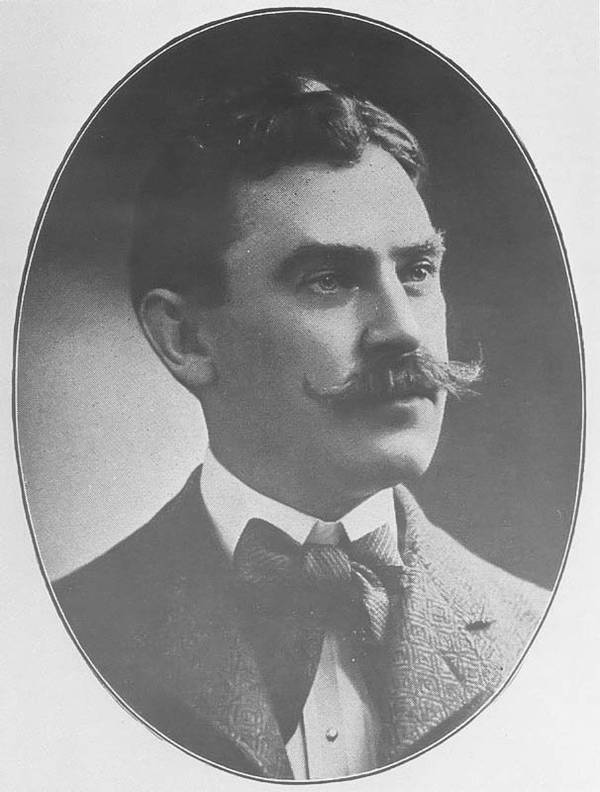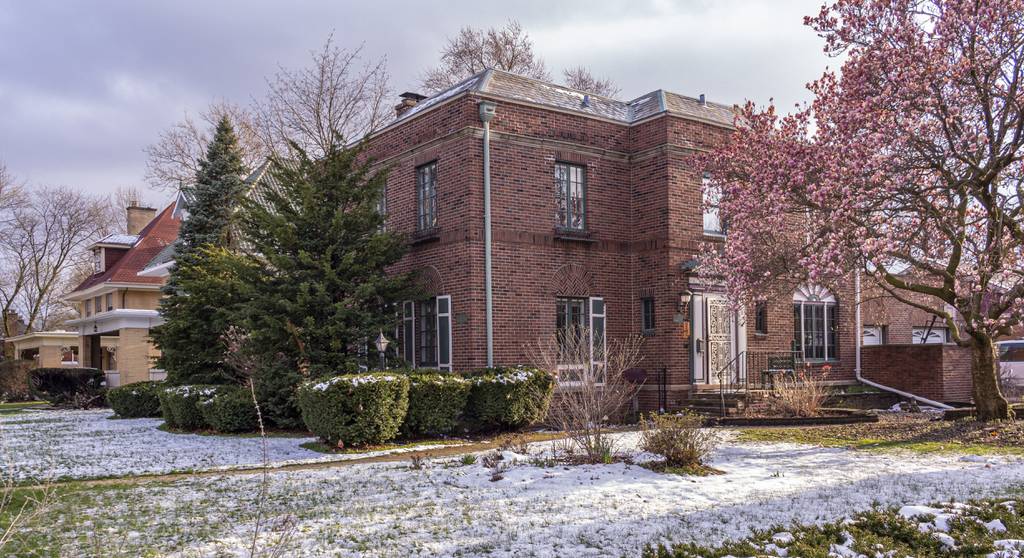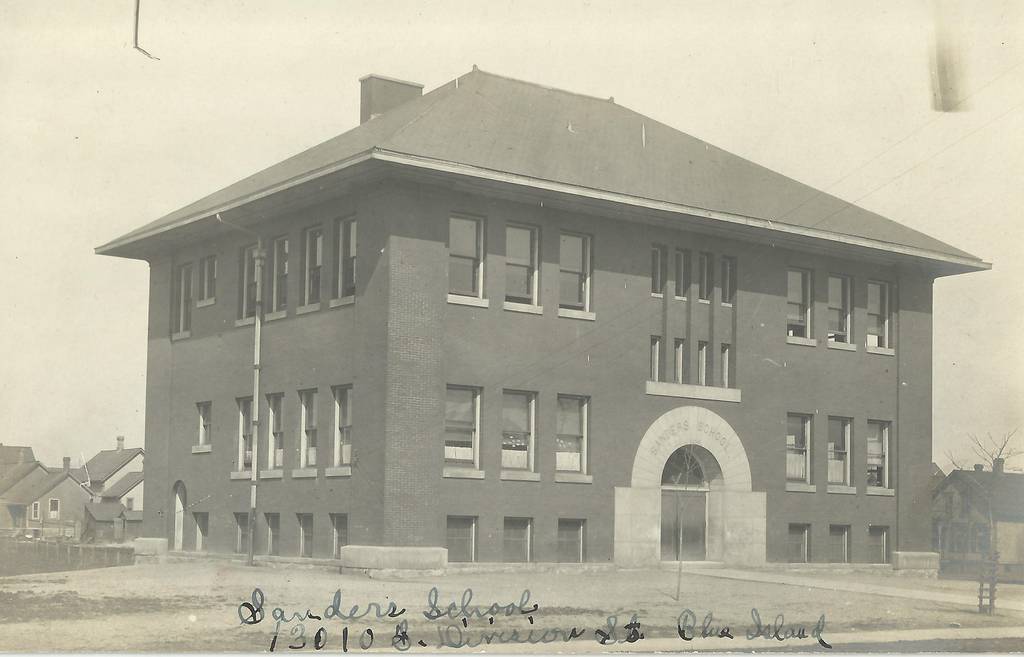Landmarks: Celebration, preservation on tap as Prairie style architects become a society in Blue Island

Growing up on Blue Island’s east side near the old Sanders School building, Kevin Brown used to ride his bike uptown to the fancy neighborhood and imagine what it would be like to live in one of the nice houses there.
He set his sights on a stately home that was built in 1899 along Greenwood Avenue by William Weber, a banker and politician who also had been president of the school board.
Brown’s family eventually moved from Blue Island, but his childhood dream home left an impression. When he moved back to the city years later with his young family, he nosed around the Greenwood Avenue property.
It wasn’t to be. The Weber House was too large, too expensive, and wasn’t on the market anyway. But the smaller house next door was, and it shared much of the same charm as his original target. He and his wife jumped on it.
“The big one wasn’t going to be obtainable to us, but this one really spoke to us,” Brown said. “It really needed some love, and we saw the potential in it. You could tell from outside it was something special.”
:quality(70)/cloudfront-us-east-1.images.arcpublishing.com/tronc/4SRJSCF3VBDB7PL22B2XVFALYU.JPG)
That special quality was something the house, now known as the Klein House, was born with, along with its next door neighbor. Both houses were designed by George W. Maher, a contemporary of Frank Lloyd Wright and fellow icon of the Prairie School style of architecture.
Maher’s designs included buildings large and small, famous and not so notable. Among his enduring structures are the Old Water Tower in Fresno, California, and Swift Hall on the campus of Northwestern University in Evanston. Another building he designed for Northwestern in 1909, Patten Gymnasium, hosted what could be considered the first incarnation of the NCAA’s March Madness tournament, a 1939 event attended by basketball inventor James Naismith. A year later, the gym was torn down.
“It was a really cool building, a giant play on a design element he would include in a lot of his houses — the segmented arch with a flair on each side,” Brown said. “At the time it was pretty groundbreaking … but the athletic needs of the university outpaced what the building could hold, capacity wise.”
Mayer’s most prolific work was in stately homes commissioned by Gilded Age wealth, many of which still bear the names of the captains of commerce who had them erected.
There are clusters of George W. Maher homes in areas long considered ritzy — Kenilworth and other neighborhoods along the Lake Michigan shore on Chicago’s North Side. His work is evident in Beverly, Oak Park alongside that of Wright, and in Hyde Park.

He appears on Chicago’s shortlist of landmark architects, along with Wright, Louis Sullivan, Daniel Burnham and Mies van der Rohe.
But Maher’s work also appears in less expected places, such as Gary, Indiana, where he worked with his son, Philip B. Maher, on civic projects such as City Hall.
The neighboring houses, including the one the Brown family bought, are part of an architectural cluster that includes a third house designed by Philip Maher. That one was built for the son of the owner of one of the George Maher houses. Across the street is a fourth house designed by George Maher protégé Robert Seyfarth, a Blue Island native who went on to great architectural success in his own right.
“In more affluent areas, you’ll see more Philip and George Maher stuff, but Seyfarth was all over the place,” Brown said. “Seyfarth did designs that are less grand and scale, and more working class oriented.”
After moving back to Blue Island and into a George Maher house surrounded by other notable historic homes, Brown became “interested in the history of Blue Island, and architecture specifically piqued our interest.”

He got involved with the Blue Island Historical Society as well as the Oak Park-based Pleasant Home Foundation, which focused on a George Maher house that in 1996 became Oak Park’s third federally designated national landmark, behind Wright’s Home and Studio, and Unity Temple.
After a dispute last year with the Oak Park Park District, which owns Pleasant Home, Brown and the foundation’s board decided to move the organization to Blue Island and fold it into a more recent effort created to promote Maher’s work beyond Pleasant Home, along with the designs of Philip Maher and Robert Seyfarth.
The paperwork to make the new George W. Maher Society an official nonprofit group is underway, said Brown, the society’s executive director.
“We’re excited to see what this year holds,” he said. “It’s really the first full year we can concentrate on this effort and expand on it.”
Already, the group has established a website touting the work of the architect that’s generated some interest, especially among those who own Maher homes.
“Something we’re trying to do, and we’ve done a good job in the early stages, is to create a sense of community among owners of George Maher designs, Philip Maher designs, Seyfarth designs — people who own these buildings and are preserving them and maintaining them,” Brown said.
While George Maher’s legacy as a Prairie School pioneer, and to lesser extent that of his son, are well ensconced among architecture buffs, Seyfarth doesn’t command as large a following. But the Blue Island native is well known in his hometown as well as his adopted home of Highland Park, Brown said.
Seyfarth has a huge footprint in Blue Island,” he said. “He eventually moved to Highland Park and did a lot of designs up there — into the 100s along the North Shore. A lot have been knocked down over the years. But a lot are still there, including the house he built for his family in Highland Park.
“They were very involved in the local goings on in Highland Park. Their legacy is still celebrated there. He has a lot of fans in both his hometowns.”

The Maher Society also is charged with promoting the legacies of the three architects, and perhaps more importantly, advocating for the preservation of their structures.
One George Maher building that is at risk is close to home. Sanders School, built in 1900 on Division Street to serve Blue Island’s east side residents and named after its first mayor, is boarded up and surrounded by temporary fencing. It served its primary purpose for more than 90 years before being sold to a private trade school and eventually abandoned around 2010, according to information from the Blue Island Historical Society.
Brown said the property was eventually reacquired by Blue Island Elementary District 130 with potential plans to consolidate administrative functions at the site, but those never came to fruition and the future of the building is unclear.
Sanders School’s status as a Maher design wasn’t confirmed until recently, Brown said, thanks to efforts by Ken Jellema, the Blue Island Historical Society’s historian and Preservation Committee member.
According to material Jellema sent to Brown, proof of Maher’s design represented “several years of searching on my part” in an effort to promote the structure as an asset to the city. “Despite the opinions of a couple of experts who doubted it,” Jellema wrote, proof arrived in the caption of a photo of the school published in “The Biennial Report of the County Superintendent of Schools, 1901.”
“Sanders School, Blue Island. Geo. W. Maher, Architect. Opened Sept., 1900,” the caption reads.
“I think we’re lucky in Blue Island to have another example of his work,” Jellema wrote. “We’ll see what the future brings for it.”

The pressures are different in Blue Island or Gary where there are several buildings designed by the Mahers, than in North Shore neighborhoods.
“Sometimes, the economics don’t exist to support these kinds of buildings anymore,” Brown said, while in wealthier areas architecturally significant buildings are at risk because “it’s all about bigger and better and new.”
Daily Southtown
Twice-weekly
News updates from the south suburbs delivered every Monday and Wednesday
It’s about preserving art, Brown said, but the importance transcends even that noble cause.
“When it comes to homes and schools, these are buildings that people lived in and spent lots of time in during their formative years,” he said. “It’s part of the fabric of communities, and when you destroy those it takes a toll on a place.”
That’s why community building is such a big part of the initial plan with the Maher Society. Brown threw a Cocktails at the Klein House party for society members at his home last weekend.
“It’s inspiring to meet people that are like minded and get into the same things you do, because it is a small community,” he said. “We dig into the history of our homes too. It’s cool to share the stories of the people who built the houses.”
Ultimately, the George W. Maher Society was formed to “celebrate someone we feel is very significant in what would eventually be known as the Prairie School of Architecture, and someone who advocated for an indigenous architecture movement, a style native to America.
“It’s important to educate people about that, because there’s a lot more than (Frank Lloyd) Wright. There’s a lot more than Maher. Seyfarth is someone we’re celebrating. Philip Mayer is someone we’re celebrating too. We want to shine a light on all of these architects because it’s part of the bigger story.”
Landmarks is a weekly column by Paul Eisenberg exploring the people, places and things that have left an indelible mark on the Southland. He can be reached at [email protected].
 Print
Print




